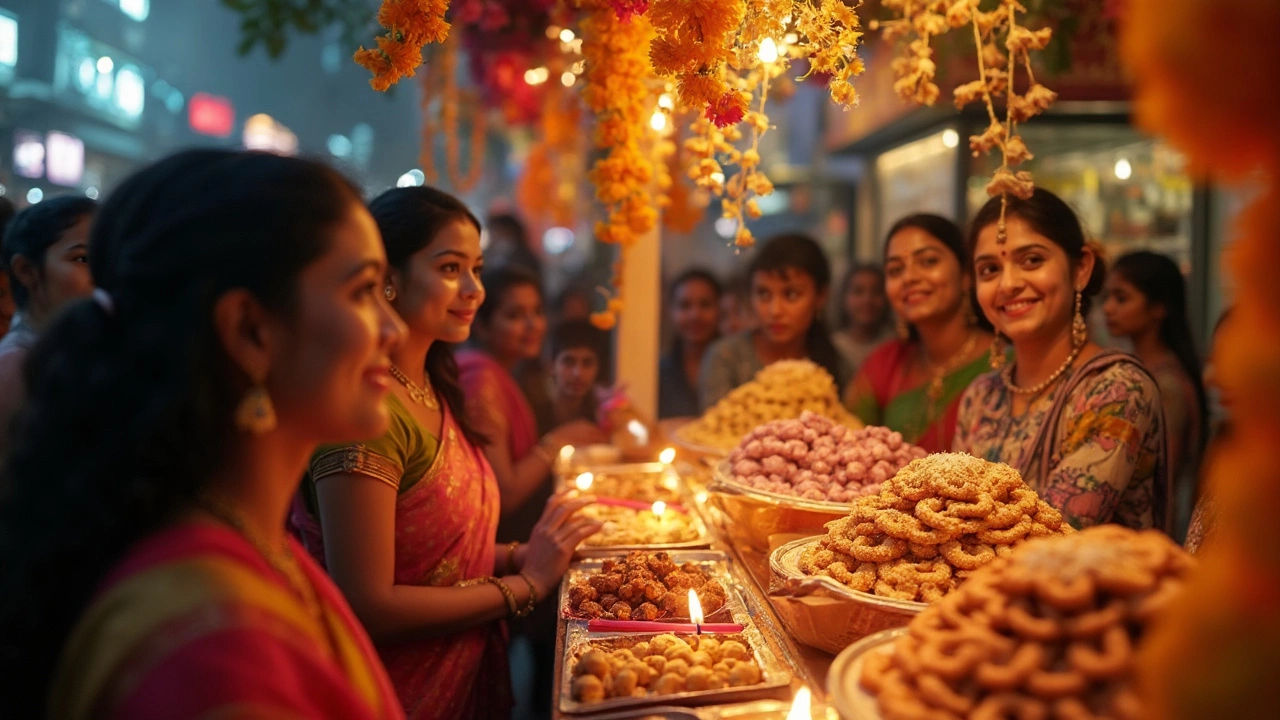Best Indian Sweets – Explore Classic Desserts & Regional Flavors
When talking about best Indian sweets, the most beloved desserts from across India, ranging from syrupy gulab jamun to crisp jalebi. Also known as Indian mithai, they are a staple in celebrations, daily tea time, and street stalls alike.
Best Indian sweets aren’t just about sugar; they blend history, regional pride, and a handful of key ingredients. The first thing anyone notices is the role of ghee, clarified butter that adds richness and a glossy finish to most Indian desserts. Ghee creates that buttery melt you feel in a bite of peda or kaju barfi. Another cornerstone is khoya, reduced milk solids that give density and a milky aroma to sweets like burfi and rasgulla. Together, ghee and khoya form the texture backbone that defines many Indian mithai.
Understanding best Indian sweets also means recognizing the vibrant regional variations. South India serves up mysore pak made with generous ghee, while West Bengal celebrates rasgulla, a spongy ball soaked in light syrup. In Gujarat, Basundi, a thickened milk dessert flavored with cardamom and saffron, showcases how dairy can shine on its own. These examples illustrate the semantic triple: "best Indian sweets encompasses regional desserts." Each region adds its own spice, nut, or cooking technique, making the sweet landscape as diverse as the country’s languages.
Creating these treats requires more than just ingredients; it calls for specific skills. Knowing when to simmer milk to the right consistency, how to caramelize sugar without burning, and the timing of spice addition are all part of the craft. This ties into another triple: "making best Indian sweets requires quality ghee." A pinch of baking soda in a jalebi batter, for instance, triggers the right puffiness, while a dash of rose water can elevate the fragrance of a simple peda. The interplay of technique and ingredients shows how traditional knowledge influences modern home kitchens.
Beyond taste, Indian sweets play a cultural role. They mark festivals like Diwali, weddings, and even newborn celebrations. The presence of sweets on a plate signals hospitality and goodwill. This relationship creates the third triple: "traditional Indian sweets influence festive celebrations." Whether you’re serving a quick shop‑made ladoo or a labor‑intensive baklava‑style sheer kurma, the sweet acts as a social connector.
For those new to the world of mithai, start with the basics: pick a sweet that matches your skill level, gather fresh ghee, high‑quality khoya, and a few trusted spices like cardamom and saffron. Experiment with a simple recipe—like mixing khoya with powdered sugar, shaping into balls, and rolling them in chopped nuts. As you gain confidence, explore layered desserts such as "kheer" poured over a base of sweetened rice or the layered richness of "shrikhand" flavored with mango pulp.
Our collection below dives deeper into each of these themes. You’ll find articles that break down the science behind why lemon brightens biryani, how to keep chutney fresh, and why paneer vs tofu matters—but most importantly, you’ll discover specific guides on classic sweets, ingredient swaps, and troubleshooting tips. Ready to taste the true variety of Indian desserts? Keep reading to uncover the sweet secrets that make each bite unforgettable.

What is India Number One Sweets? A Deep Dive into Iconic Indian Desserts
This article untangles the big debate behind India's number one sweet. It breaks down what makes a sweet truly iconic, looks at famous contenders like Gulab Jamun and Jalebi, and gives practical tips on preparing them at home. Real-life stories and quirky fun facts make this a fun read, even if you’ve never tried Indian sweets. Make informed dessert choices and impress your friends by learning what truly makes a sweet win hearts across India. Discover history, culture, and recipe tips—all in one place.